Fruit bowl and coffee pot.
Oil on canvas signed lower left.
15 x 21,6 in
Painting listed in the archives Camoin under the title : "fruit bowl and coffee pot around 1935"
CHARLES CAMOIN
THE BEGINNINGS
Charles Camoin was born in Marseille September 23, 1879, the last of a family of four. His father, Joseph Camoin, runs the business of painting and decorating "Camoin Jeune", founded in 1851 in Marseilles. After the death of their father in 1885, children under guardianship and live alternately in Marseille and Paris. For commerce, however Camoin took drawing classes at the Ecole des Beaux-Arts de Marseille since 1895. He receives the following year a "first prize figure" who decides to pursue this path.In January 1898, moved to Paris with her mother, Camoin enrolled at the Ecole des Beaux-Arts. Admitted to the studio of Gustave Moreau, he gets only brief teaching master who died in April of that year. However, this is where he met Henri Matisse, Albert Marquet and Henri Manguin. Like his comrades, Camoin decides to leave the Fine Arts and works in free workshops. The paintings of this period are characterized by a very specific design as well as by strong contrasts. As Matisse, Camoin has developed its range to clear tones. It was indeed at that time knowledge of the Impressionists he was able to discover the works at the Luxembourg Museum, following the Caillebotte bequest or in Parisian galleries, Durand-Ruel, Vollard or. From this period date the first landscapes, including views of Paris or the South.In November 1900, Camoin to leave for military service, which then lasts three years. While his regiment in Aix-en-Provence in October 1901, the young soldier dares to make an evening at Paul Cézanne. The old master, adored by the younger generation of artists, is now known for his difficult character. But Cezanne takes sympathy for those he calls "the brave Marseillais" Carlo Camoin. Cézanne invites regularly of Sunday meal with the poet Leo Larguier and Louis Aurenche. Subsequently, the two artists remain in contact and exchange regular correspondence which excerpts will be published in 1905 in the journal Mercure de France.THE FAUVE PERIODReturned from his military period in September 1903, Camoin moved to Paris. He moved into a studio Place Dauphine. By this time he exhibited at the Salon des Independants and the Salon d'Automne and begins to be noticed by critics. He joined the artist group then gathered around Matisse: Manguin, Marquet and Jean Puy. They set out together, especially in the small gallery of Berthe Weill, rue Victor Massé in Paris.When he is not in the capital, Camoin crosses his native afternoon trip to Italy (in 1904 he went to Rome, Naples and Capri). His landscapes are then characterized by a touch more removed, wider and expressive than before.In 1905 Camoin involved with Matisse, Manguin, Marquet, Derain and Vlaminck at room VII of the Salon d'Automne in 1905 that launches Fauvism, which he will now be attached. Unlike the Impressionists, Camoin is not interested in the atmospheric effect or refinements of retinal perception but rather the arrangement of shapes and planes in perspective space, implementing the lesson of Cézanne who advised him to "do Poussin after nature".Its Mediterranean landscapes where he has spent the summer with Manguin and Marquet, then clean off a brightness to the Fauves group.However Camoin never endangers the cohesion of the painted image and transposes rarely colors, unlike Matisse or Derain at the same time.It is in his figures that is closest to the fawn aesthetic, especially in the sometimes provocative evocation of the world of margins.Parisian workshops took place: in January 1907, he was 28 Boulevard de Clichy, at 6, rue Mansart in October 1907, then at 12 rue Cortot in 1908 and at 46 rue Lepic in 1910.In 1908 Camoin has his first solo exhibition at the gallery of the young merchant of German origin, Daniel Henry Kahnweiler. It was at that moment that comes into contract with the German merchant Frankfurt, Ludwig Schames. His paintings circulate exhibitions of avant-garde European at the Salon of the Golden Fleece in Moscow, the Company Manes in Prague, at the Salon of Free Aesthetics in Brussels at Sonderbund Düsseldorf or at the famous Armory Show in New York in 1913. in 1912, he signed a contract with Eugene Druet Gallery.From 1908 Camoin reintroduced the black in its palette. Less attentive to detail and structure, colorful writing attaches increasing importance to the gestures of the key. Some views of Paris, including Montmartre, where Camoin settled, bear the same stamp as those melancholy contemporary Marquet whom he remained close, as Matisse elsewhere.From this period dates his relationship with the woman painter Emilie Charmy with which he stays in Corsica. Camoin then remains true to the colorist vein opened by Fauvism and Cubism remains refractory.Camoin joined Matisse in Tangiers where he spends the winter season 1912-1913.On his return from Tangier, Camoin destroyed much of the paintings found in his studio. He cut into pieces before throwing them in the trash on the sidewalk of the Rue Lepic. Debris is fortunately saved, collected and proposed flea market where they are bought by Father Soulier, famous merchant of the Rue des Martyrs, which brings them together. It seems that the story quickly went around Paris as it is told in the press, particularly by Apollinaire who believes these paintings "among the most interesting of this painter" (Paris-Journal, July 25, 1914). Once restored more or less skillfully, some of them are acquired at that time by knowledgeable collectors, including art critics like André Warnod Felix Fénéon, Francis Carco or Gustave Coquiot. Moulin Rouge to the carriages, now in the Museum of Menton, is an example. The painting was donated to the Museum but before it was signed by the artist who thus admitted paternity, even after having destroyed many years ago.WAR AND POST-WARLike most artists of his generation who are enlisted, the war of 1914-18 marks a break in the career of Camoin. Mobilized, it is first sent as a stretcher bearer in front Vosges and then in 1916 in all new sections of camouflage in which he painted canvases kilometer. He shares an extensive correspondence with Matisse who regularly sends him parcels and informed him of his aesthetic reflections. Camouflage, he met the writer and merchant Charles Vildrac and Dunoyer de Segonzac and poet Léon-Paul Fargue with whom he befriends. On his return to civilian life in 1919, he settles back in his studio at 46 rue Lepic in Montmartre.Camoin married in March 1920 with Charlotte Prost. They had a daughter, Anne-Marie, born in 1933. The paintings after the war, many views of the South, Cannes, Antibes, Aix-en-Provence, reconnect with the delicacy of Tangier period. This quality of light as well as the intimate atmosphere that emerges is very close to contemporary paintings by Matisse, his neighbor, installed in Nice since 1917. This is also set they visit old Renoir in Cagnes , in November 1918.Camoin's admiration for painting by Renoir, shared by many artists of his generation, will continue to be felt in his work now. Its footprint would be extremely sensitive in many portraits and still lifes in which Camoin seeks to achieve prettiness and quality of key characteristic of Renoir. Postwar, Camoin asserts growing taste for sensual painting, sensual and spontaneous, devoid of intellectual pretension.Inaugurated painter for the new life he shares between his Montmartre studio and long stays in the South, especially in Saint-Tropez, where he settled in 1921. He regularly exhibits and sells its production to Vildrac galleries, Druet Marcel Bernheim Bernheim-Jeune, or Charpentier without signing an exclusive contract with any of them. It also continues to expose almost every year in the Salon d'Automne and the Independent, and the Salon des Tuileries.During the War of 1940, in Saint-Tropez, Camoin painted many views of the Gulf and its surroundings. He fixed his work around that become recurring motifs selected as the Gulf of Saint-Tropez, Ramatuelle or even the place of the Strings. In 1946 he rented a studio overlooking St Tropez port, which became his favorite motif. In 1955, he was promoted to Officer of the Legion of Honor and received the grand prize of the Biennial of Menton. He died in his Montmartre studio 20 May 1965.The Fine Arts Museum of Marseilles organized a retrospective in 1966 (41 paintings). In 1971, takes place a second retrospective at the Palais de la Méditerranée in Nice (72 paintings) followed by the publication of a monograph by Danièle Giraudy. In 1998, organized a traveling retrospective exhibition at the Cantini museum in Marseille and the Hermitage Foundation in Lausanne (90 paintings, 90 drawings). His works are found in many museums in France and abroad.Museums : In GermanyBerlin, Staatliche Museen zu Berlin: The Sevillian, 1907, oil on canvas;Gelsenkirchen, Kunstmuseum Gelsenkirchen (from): The Old Port in casks, 1904, oil on canvas;Saarbrücken, Saarland museum: Rocks in the creeks of Piana, 1906, oil on canvas;In AustraliaSydney, Art Gallery of New South Wales: the hostess of Marnes-la-Coquette, 1899, oil on canvas;In SpainMadrid, Thyssen-Bornemisza Museum: The Port of Cassis to two tartans, 1905, oil on canvas;In the USAChicago, Art Institute of Chicago: Young Marseillaise, 1904-1905, oil on canvas;New York, MoMA: Standing Nude, 1900, watercolor and ink on paper;In FranceAix-en-Provence, the Granet Museum: Soldier in Self-Portrait, 1901, oil on canvas;Boulogne-Billancourt, museum Thirty Years: beach in Tangier, 1913, oil on canvas;Draguignan, municipal museum Naples, Vesuvius view of Villa Capella, oil on canvas, 1904Grenoble, Grenoble Museum: Minaret in Tangiers, 1912, oil on canvas;Marseille Cantini museum:Little Lina, 1907, oil on canvas;Place the carousel, 1907, oil on canvas;Montpellier, Musée Fabre: Portrait of Albert Marquet, 1904, oil on canvas;Nice Museum of Fine Arts: Nicole on the terrace, 1930, oil on canvas;paris:Modern Art Museum of the city of Paris:Portrait of the Artist's Mother, 1898, oil on canvas;The Saltimbanque resting, 1905, oil on canvas;Reclining Nude, 1905, pastel on paper;National Museum of Modern Art: Blue Cup, 1930, oil on canvas;Musée de Montmartre: Durrio Paco and his dogs, circa 1937, oil on canvas;Reims, Museum of Fine Arts: Le Bassin des Tuileries, 1902, oil on canvas;Saint-Tropez, Annonciade Museum:Place herb, 1905, oil on canvas;The Transporter Bridge, 1928, oil on canvas;Canal Customs, 1928, oil on canvas;Place des Lices, 1939, oil on canvas;Strasbourg Museum of Fine Arts: Madame Matisse making tapestry, 1904, oil on canvas;Toulouse Fondation Bemberg: Four boats in the port of Cassis, 1905, oil on canvas;Toulon, Toulon Art Museum:Port of Saint-Tropez, 1921, oil on canvas;Cape Brown landscape, oil on canvas;UKGlasgow, Kelvingrove Art Gallery and Museum: The Place de Clichy, 1910, oil on canvas;In SwissGeneva, Petit Palais museum: tartans in the port of Saint-Tropez, 1921, oil on canvas.CAMOIN Charles ( 1879 / 1965 )Fruit bowl and coffee pot.Oil on canvas signed lower left.15 x 21,6 inPainting listed in the archives Camoin under the title : "fruit bowl and coffee pot around 1935"CHARLES CAMOINTHE BEGINNINGSCharles Camoin was born in Marseille September 23, 1879, the last of a family of four. His father, Joseph Camoin, runs the business of painting and decorating "Camoin Jeune", founded in 1851 in Marseilles. After the death of their father in 1885, children under guardianship and live alternately in Marseille and Paris. For commerce, however Camoin took drawing classes at the Ecole des Beaux-Arts de Marseille since 1895. He receives the following year a "first prize figure" who decides to pursue this path.In January 1898, moved to Paris with her mother, Camoin enrolled at the Ecole des Beaux-Arts. Admitted to the studio of Gustave Moreau, he gets only brief teaching master who died in April of that year. However, this is where he met Henri Matisse, Albert Marquet and Henri Manguin. Like his comrades, Camoin decides to leave the Fine Arts and works in free workshops. The paintings of this period are characterized by a very specific design as well as by strong contrasts. As Matisse, Camoin has developed its range to clear tones. It was indeed at that time knowledge of the Impressionists he was able to discover the works at the Luxembourg Museum, following the Caillebotte bequest or in Parisian galleries, Durand-Ruel, Vollard or. From this period date the first landscapes, including views of Paris or the South.In November 1900, Camoin to leave for military service, which then lasts three years. While his regiment in Aix-en-Provence in October 1901, the young soldier dares to make an evening at Paul Cézanne. The old master, adored by the younger generation of artists, is now known for his difficult character. But Cezanne takes sympathy for those he calls "the brave Marseillais" Carlo Camoin. Cézanne invites regularly of Sunday meal with the poet Leo Larguier and Louis Aurenche. Subsequently, the two artists remain in contact and exchange regular correspondence which excerpts will be published in 1905 in the journal Mercure de France.THE FAUVE PERIODReturned from his military period in September 1903, Camoin moved to Paris. He moved into a studio Place Dauphine. By this time he exhibited at the Salon des Independants and the Salon d'Automne and begins to be noticed by critics. He joined the artist group then gathered around Matisse: Manguin, Marquet and Jean Puy. They set out together, especially in the small gallery of Berthe Weill, rue Victor Massé in Paris.When he is not in the capital, Camoin crosses his native afternoon trip to Italy (in 1904 he went to Rome, Naples and Capri). His landscapes are then characterized by a touch more removed, wider and expressive than before.In 1905 Camoin involved with Matisse, Manguin, Marquet, Derain and Vlaminck at room VII of the Salon d'Automne in 1905 that launches Fauvism, which he will now be attached. Unlike the Impressionists, Camoin is not interested in the atmospheric effect or refinements of retinal perception but rather the arrangement of shapes and planes in perspective space, implementing the lesson of Cézanne who advised him to "do Poussin after nature".Its Mediterranean landscapes where he has spent the summer with Manguin and Marquet, then clean off a brightness to the Fauves group.However Camoin never endangers the cohesion of the painted image and transposes rarely colors, unlike Matisse or Derain at the same time.It is in his figures that is closest to the fawn aesthetic, especially in the sometimes provocative evocation of the world of margins.Parisian workshops took place: in January 1907, he was 28 Boulevard de Clichy, at 6, rue Mansart in October 1907, then at 12 rue Cortot in 1908 and at 46 rue Lepic in 1910.In 1908 Camoin has his first solo exhibition at the gallery of the young merchant of German origin, Daniel Henry Kahnweiler. It was at that moment that comes into contract with the German merchant Frankfurt, Ludwig Schames. His paintings circulate exhibitions of avant-garde European at the Salon of the Golden Fleece in Moscow, the Company Manes in Prague, at the Salon of Free Aesthetics in Brussels at Sonderbund Düsseldorf or at the famous Armory Show in New York in 1913. in 1912, he signed a contract with Eugene Druet Gallery.From 1908 Camoin reintroduced the black in its palette. Less attentive to detail and structure, colorful writing attaches increasing importance to the gestures of the key. Some views of Paris, including Montmartre, where Camoin settled, bear the same stamp as those melancholy contemporary Marquet whom he remained close, as Matisse elsewhere.From this period dates his relationship with the woman painter Emilie Charmy with which he stays in Corsica. Camoin then remains true to the colorist vein opened by Fauvism and Cubism remains refractory.Camoin joined Matisse in Tangiers where he spends the winter season 1912-1913.On his return from Tangier, Camoin destroyed much of the paintings found in his studio. He cut into pieces before throwing them in the trash on the sidewalk of the Rue Lepic. Debris is fortunately saved, collected and proposed flea market where they are bought by Father Soulier, famous merchant of the Rue des Martyrs, which brings them together. It seems that the story quickly went around Paris as it is told in the press, particularly by Apollinaire who believes these paintings "among the most interesting of this painter" (Paris-Journal, July 25, 1914). Once restored more or less skillfully, some of them are acquired at that time by knowledgeable collectors, including art critics like André Warnod Felix Fénéon, Francis Carco or Gustave Coquiot. Moulin Rouge to the carriages, now in the Museum of Menton, is an example. The painting was donated to the Museum but before it was signed by the artist who thus admitted paternity, even after having destroyed many years ago.WAR AND POST-WARLike most artists of his generation who are enlisted, the war of 1914-18 marks a break in the career of Camoin. Mobilized, it is first sent as a stretcher bearer in front Vosges and then in 1916 in all new sections of camouflage in which he painted canvases kilometer. He shares an extensive correspondence with Matisse who regularly sends him parcels and informed him of his aesthetic reflections. Camouflage, he met the writer and merchant Charles Vildrac and Dunoyer de Segonzac and poet Léon-Paul Fargue with whom he befriends. On his return to civilian life in 1919, he settles back in his studio at 46 rue Lepic in Montmartre.Camoin married in March 1920 with Charlotte Prost. They had a daughter, Anne-Marie, born in 1933. The paintings after the war, many views of the South, Cannes, Antibes, Aix-en-Provence, reconnect with the delicacy of Tangier period. This quality of light as well as the intimate atmosphere that emerges is very close to contemporary paintings by Matisse, his neighbor, installed in Nice since 1917. This is also set they visit old Renoir in Cagnes , in November 1918.Camoin's admiration for painting by Renoir, shared by many artists of his generation, will continue to be felt in his work now. Its footprint would be extremely sensitive in many portraits and still lifes in which Camoin seeks to achieve prettiness and quality of key characteristic of Renoir. Postwar, Camoin asserts growing taste for sensual painting, sensual and spontaneous, devoid of intellectual pretension.Inaugurated painter for the new life he shares between his Montmartre studio and long stays in the South, especially in Saint-Tropez, where he settled in 1921. He regularly exhibits and sells its production to Vildrac galleries, Druet Marcel Bernheim Bernheim-Jeune, or Charpentier without signing an exclusive contract with any of them. It also continues to expose almost every year in the Salon d'Automne and the Independent, and the Salon des Tuileries.During the War of 1940, in Saint-Tropez, Camoin painted many views of the Gulf and its surroundings. He fixed his work around that become recurring motifs selected as the Gulf of Saint-Tropez, Ramatuelle or even the place of the Strings. In 1946 he rented a studio overlooking St Tropez port, which became his favorite motif. In 1955, he was promoted to Officer of the Legion of Honor and received the grand prize of the Biennial of Menton. He died in his Montmartre studio 20 May 1965.The Fine Arts Museum of Marseilles organized a retrospective in 1966 (41 paintings). In 1971, takes place a second retrospective at the Palais de la Méditerranée in Nice (72 paintings) followed by the publication of a monograph by Danièle Giraudy. In 1998, organized a traveling retrospective exhibition at the Cantini museum in Marseille and the Hermitage Foundation in Lausanne (90 paintings, 90 drawings). His works are found in many museums in France and abroad.Museums : In GermanyBerlin, Staatliche Museen zu Berlin: The Sevillian, 1907, oil on canvas;Gelsenkirchen, Kunstmuseum Gelsenkirchen (from): The Old Port in casks, 1904, oil on canvas;Saarbrücken, Saarland museum: Rocks in the creeks of Piana, 1906, oil on canvas;In AustraliaSydney, Art Gallery of New South Wales: the hostess of Marnes-la-Coquette, 1899, oil on canvas;In SpainMadrid, Thyssen-Bornemisza Museum: The Port of Cassis to two tartans, 1905, oil on canvas;In the USAChicago, Art Institute of Chicago: Young Marseillaise, 1904-1905, oil on canvas;New York, MoMA: Standing Nude, 1900, watercolor and ink on paper;In FranceAix-en-Provence, the Granet Museum: Soldier in Self-Portrait, 1901, oil on canvas;Boulogne-Billancourt, museum Thirty Years: beach in Tangier, 1913, oil on canvas;Draguignan, municipal museum Naples, Vesuvius view of Villa Capella, oil on canvas, 1904Grenoble, Grenoble Museum: Minaret in Tangiers, 1912, oil on canvas;Marseille Cantini museum:Little Lina, 1907, oil on canvas;Place the carousel, 1907, oil on canvas;Montpellier, Musée Fabre: Portrait of Albert Marquet, 1904, oil on canvas;Nice Museum of Fine Arts: Nicole on the terrace, 1930, oil on canvas;paris:Modern Art Museum of the city of Paris:Portrait of the Artist's Mother, 1898, oil on canvas;The Saltimbanque resting, 1905, oil on canvas;Reclining Nude, 1905, pastel on paper;National Museum of Modern Art: Blue Cup, 1930, oil on canvas;Musée de Montmartre: Durrio Paco and his dogs, circa 1937, oil on canvas;Reims, Museum of Fine Arts: Le Bassin des Tuileries, 1902, oil on canvas;Saint-Tropez, Annonciade Museum:Place herb, 1905, oil on canvas;The Transporter Bridge, 1928, oil on canvas;Canal Customs, 1928, oil on canvas;Place des Lices, 1939, oil on canvas;Strasbourg Museum of Fine Arts: Madame Matisse making tapestry, 1904, oil on canvas;Toulouse Fondation Bemberg: Four boats in the port of Cassis, 1905, oil on canvas;Toulon, Toulon Art Museum:Port of Saint-Tropez, 1921, oil on canvas;Cape Brown landscape, oil on canvas;UKGlasgow, Kelvingrove Art Gallery and Museum: The Place de Clichy, 1910, oil on canvas;In SwissGeneva, Petit Palais museum: tartans in the port of Saint-Tropez, 1921, oil on canvas.
violondingres.fr


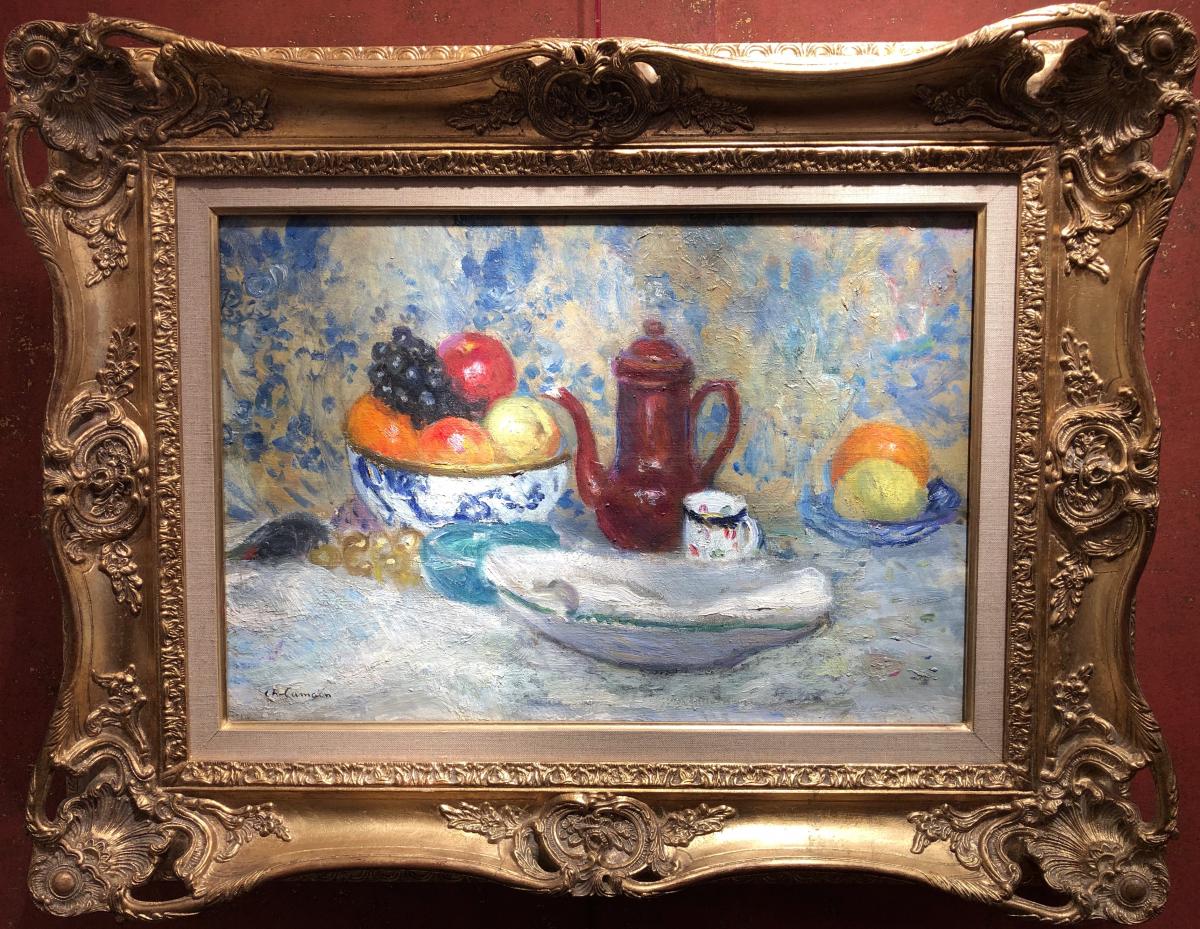
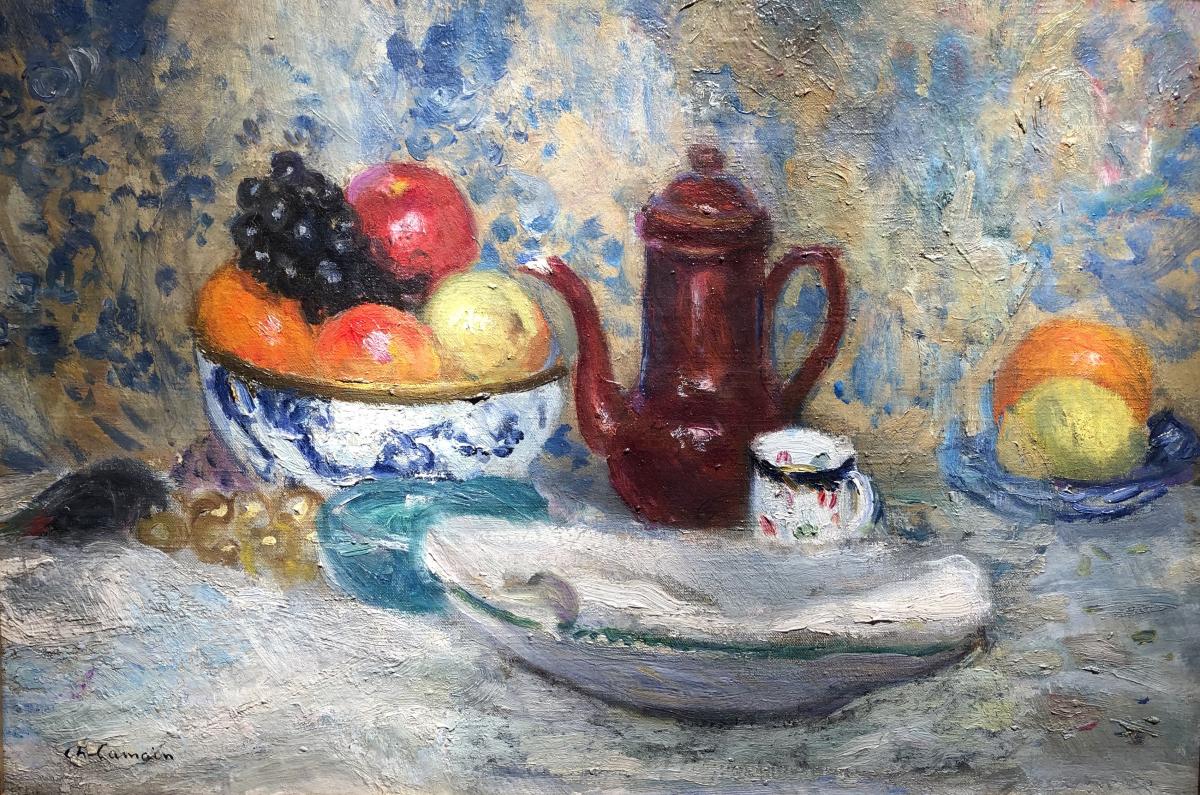
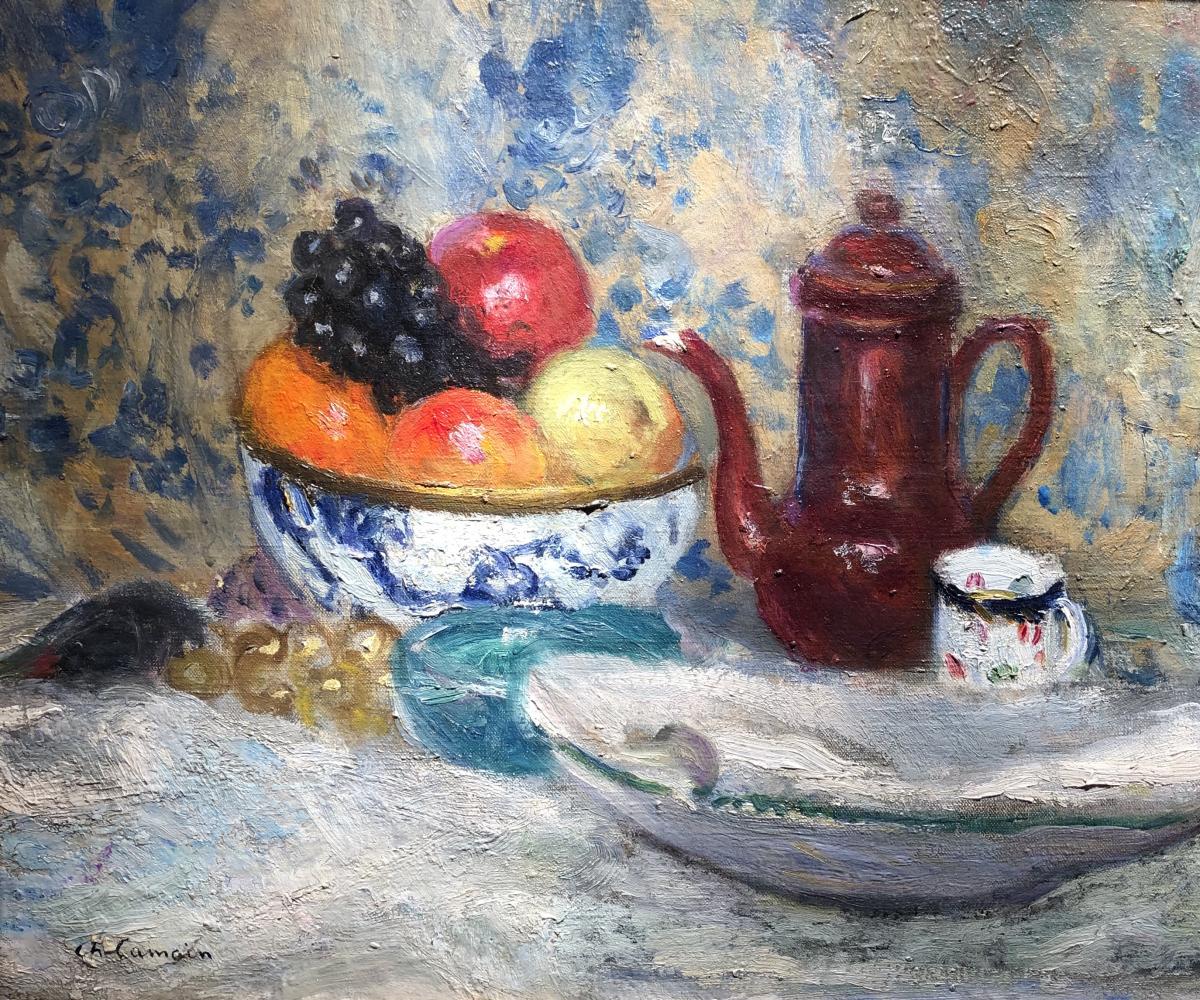
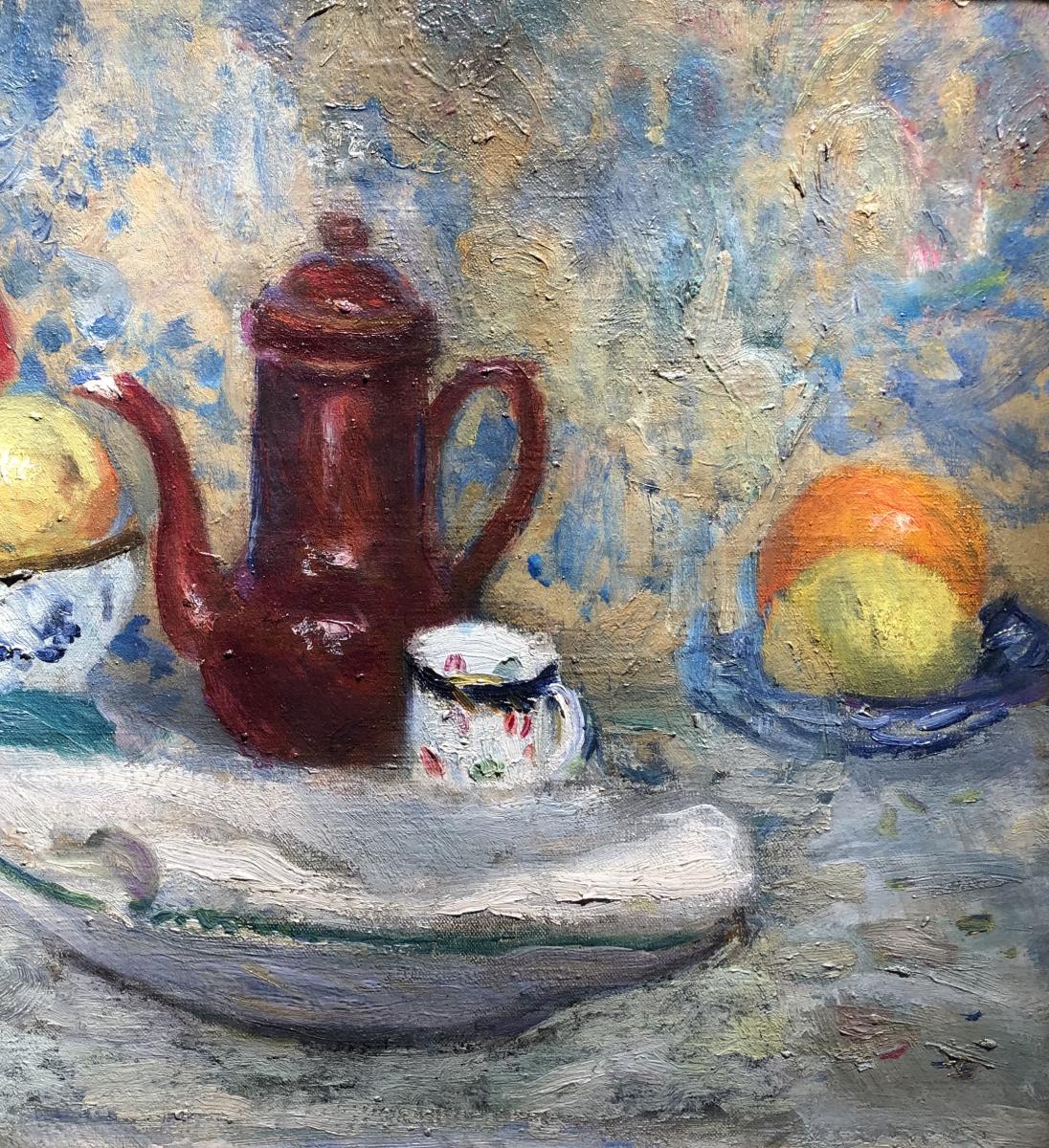

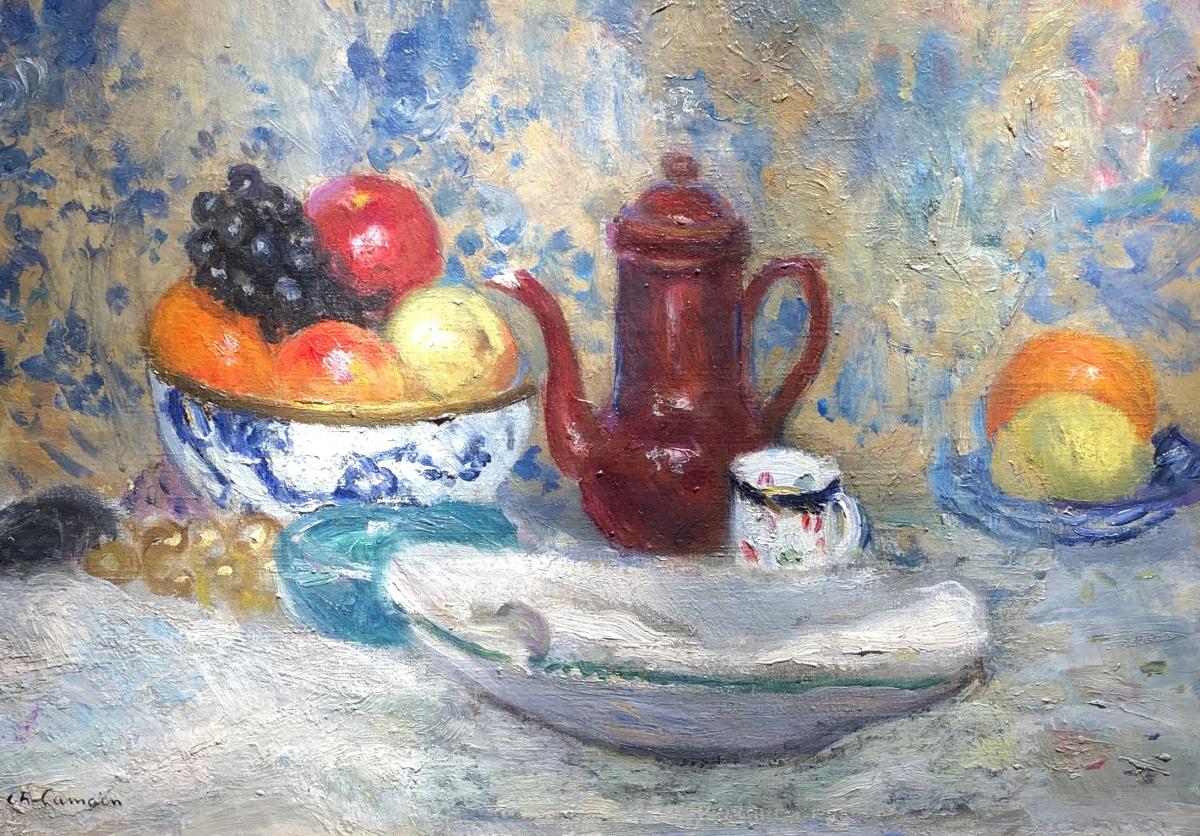

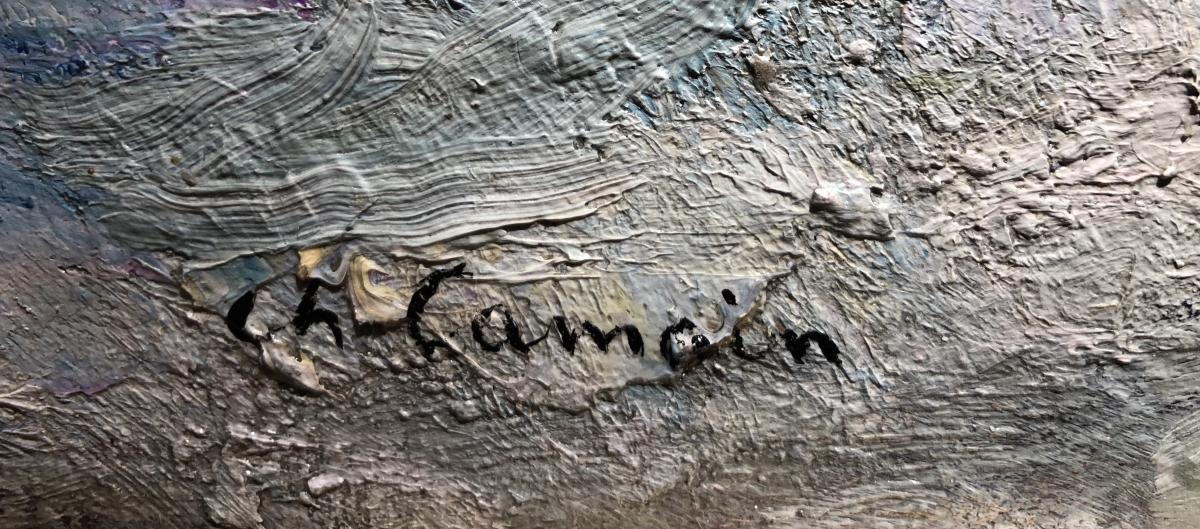
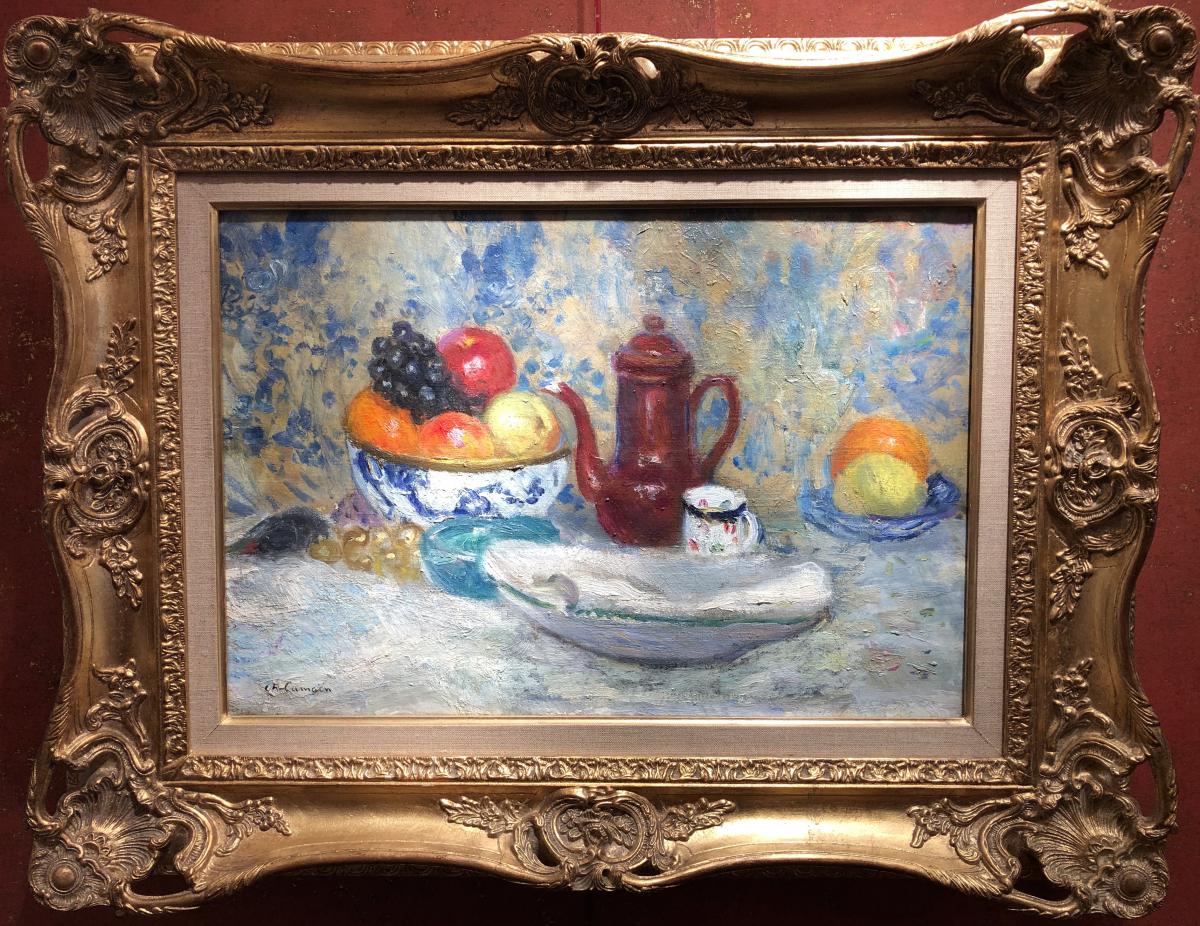



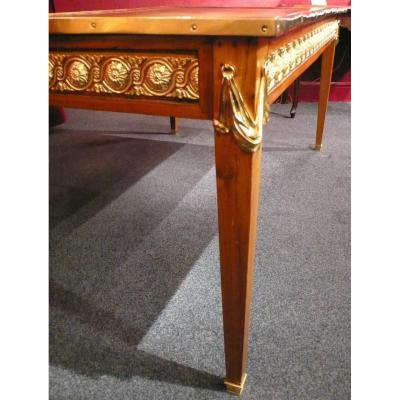
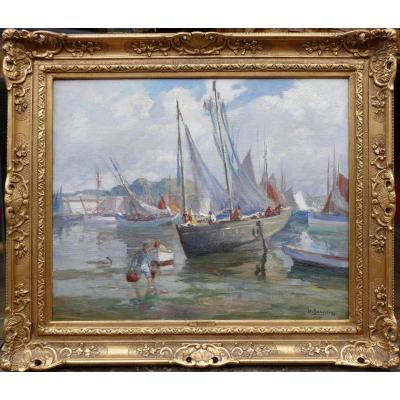
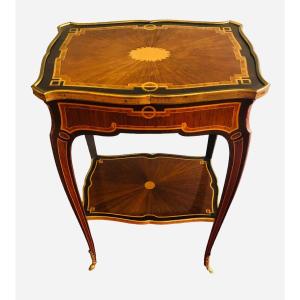
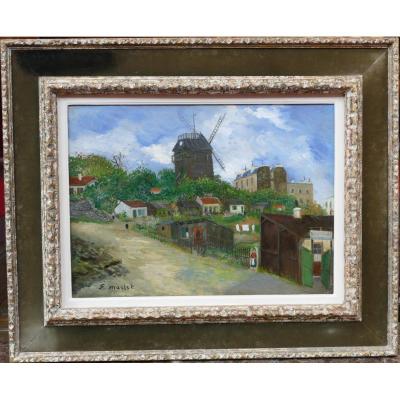



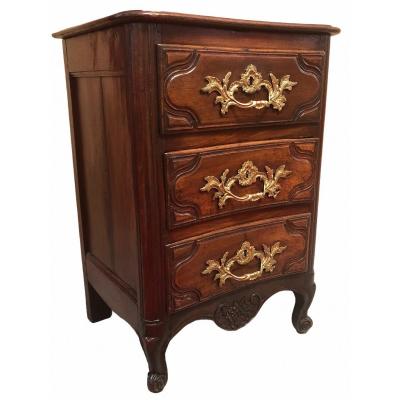





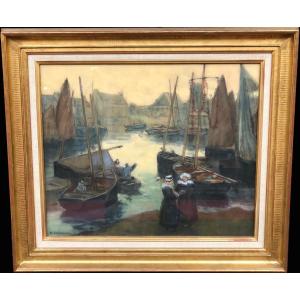


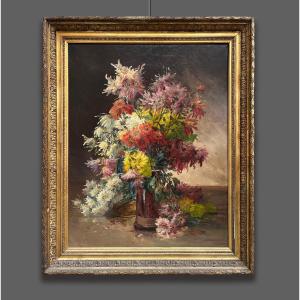
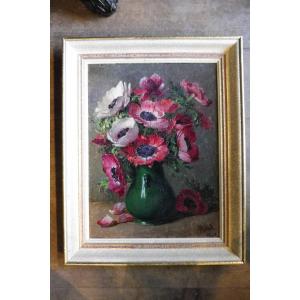
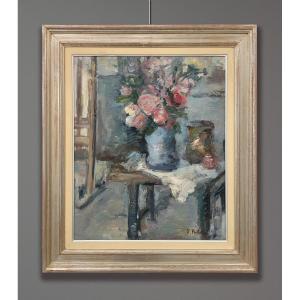
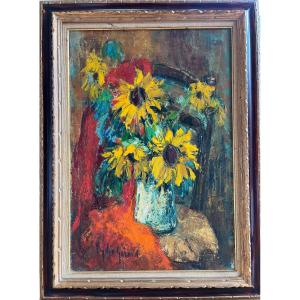



 Le Magazine de PROANTIC
Le Magazine de PROANTIC TRÉSORS Magazine
TRÉSORS Magazine Rivista Artiquariato
Rivista Artiquariato